An IoT device management platform is your toolbox for gaining insights into all of your deployed devices, and managing their uptime, security and functionality. The importance of such a solution grows with the size of your network. Not only that, but the lack of management software can actually inhibit the scalability of your device deployment. How will you reach those devices, troubleshoot them, reboot them, and update their firmware?
In the companion blog post to this one —
What Is IoT Device Management? — we talk about the specific remote management tasks that IoT managers need to be able to perform.
In this blog post, we will provide some use case examples that illustrate the importance of an IoT device management platform, as well as additional insights on how IoT management tools work and how to evaluate their features, which is a critical step in selecting the best IoT solutions partner.
Who Needs an IoT Device Management Platform?

So, who needs a software platform to manage their deployed hardware? Aren't all those devices programmed to reliably perform a function, and can't you just connect them, make sure they're working, and go on with your day? Maybe — if you only have a few devices and you can physically access them quickly and easily when needed. Otherwise, you will need a management platform that gives you the ability to gain insights on the performance of all of your devices at a glance, troubleshoot them and perform updates.
IoT device management solutions come in different shapes and sizes, but they typically give you access to each of those deployed devices from an office environment or a mobile device in the field. This enables your IoT managers and IT personnel to troubleshoot devices and manage them from a dashboard. These tasks can include:
- Setting up notifications for certain conditions, like sensor readings that are out of normal range.
- Updating device functionality by sending new configurations out to any or all devices with just a few clicks.
- Enhancing the edge computing performance of your deployed network to improve efficiency and data management.
- Deploying security patches to all devices on your network to address new industry information or discovered threats.
- Ensuring your devices can report on their battery level so batteries can be replaced promptly.
For these reasons and more, to keep your device network up-to-date, you will need an IoT device management platform to not only reach and manage your devices, but to listen to them as well. Most importantly, the platform must have sophisticated built-in security, so that only authorized devices and users can gain access to your device network.
IoT Deployment Examples: The Case for a Connected Device Management Platform
Internet of Things devices can be deployed anywhere. While it’s not uncommon for devices such as radio modules, gateways and cellular routers to be installed close at hand, many such devices end up far afield, in difficult-to-access places, moving vehicles or dangerous environments. Let’s look at some important use cases for remote IoT device control.
Smart City Lighting

Smart cities today are moving to automated, sensor-based lighting systems that detect changing lighting conditions and the presence of vehicles. These smart lighting systems are far more energy efficient, as they automatically turn off when they are not needed.
As the devices to detect and control the lights are installed on top of a light post, they are physically unreachable except by a technician in a truck outfitted with a “cherry picker,” which is a highly expensive proposition. Additionally, there are thousands of these devices in a deployment. Managing configuration, security, or functionality updates for all of those devices is highly impractical. See a
smart city lighting case study.
Farming and Precision Agriculture
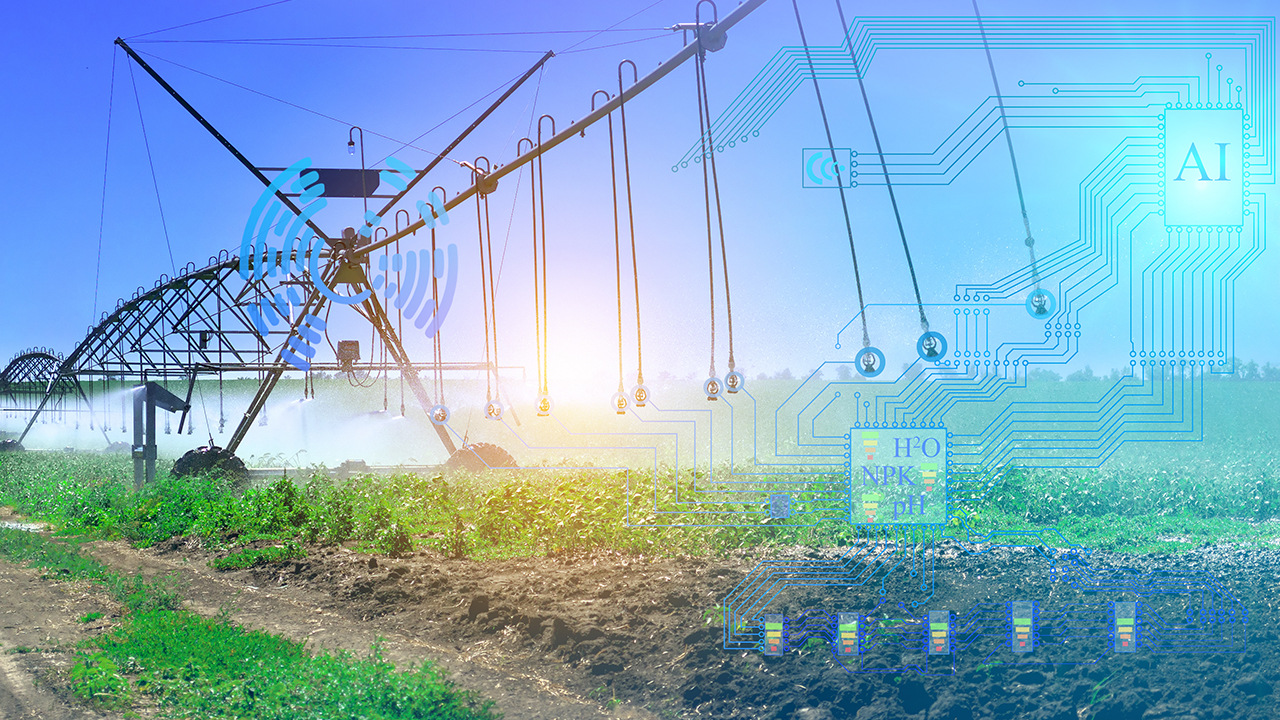
Agriculture is one of the top industries for adoption of IoT technologies for a range of applications. from automated feeding systems to tank and feed bin monitoring, smart irrigation, activating frost fans, and other automated processes.
In precision agriculture, IoT devices can be deployed at varying points across thousands of acres of farmland. For example, GPS-enabled IoT devices are deployed in automatic watering systems, not only to activate irrigation based on soil moisture sensors and rotate the system across a defined crop area, but also to locate the systems if they have rolled off course.
Operators must have the ability to remotely access the devices for troubleshooting to ensure these systems are functioning properly. Increasingly, artificial intelligence is incorporated into these applications to enable automated decision-making processes based on incoming data. See a
precision agriculture case study.
Mobile Applications and Fleet Management
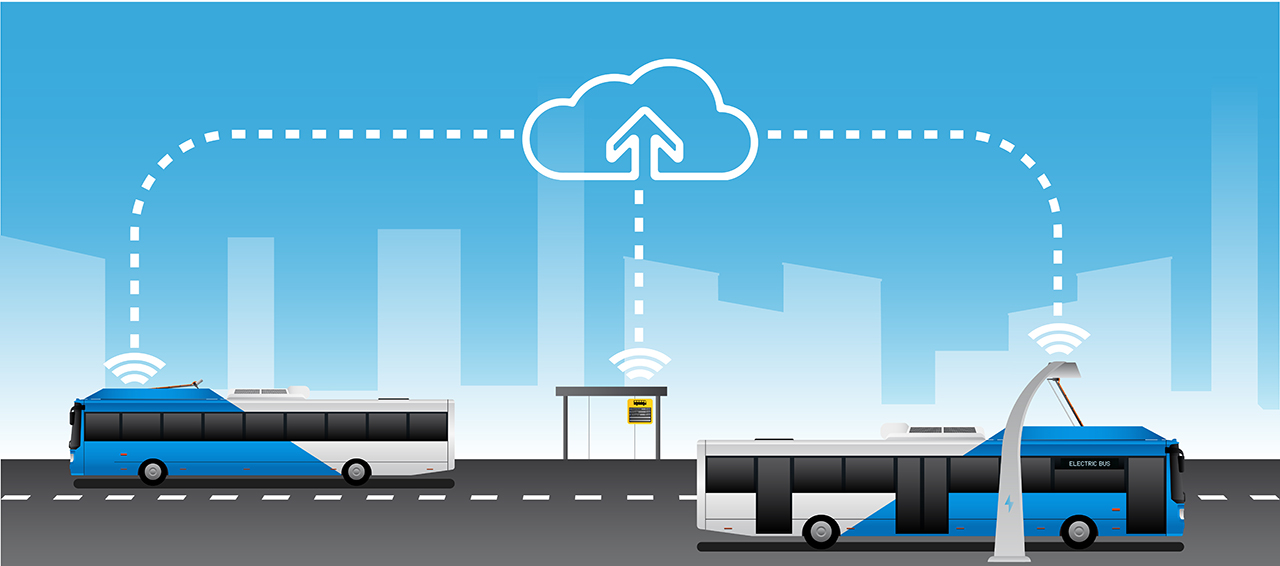
IoT devices like high-performance cellular routers can be in constant motion — such as in
city transit systems, supply chain and delivery services. For example, in buses, subways and light rail systems, IoT devices are tasked with everything from fare collection to security monitoring to providing operator GPS and passenger Wi-Fi. These systems have become more complex and mission critical for transit agencies, which means the ability to manage them remotely and gain visibility across the city is paramount.
In supply chain and package delivery, IoT devices monitor and track fleets, vehicle operator metrics and the status of deliveries across large metro areas and trucking routes. These applications have a critical need for reliability, which requires the ability to remotely monitor, troubleshoot and manage them from a centralized location.
For some examples of fleet management and transit applications, see the
Command Alkon case study to learn how the company deploys remote monitoring for fleet telematics, and learn how
SEPTA used Digi solutions to meet the federal PTC mandate requirements for rail systems.
Industrial IoT Applications
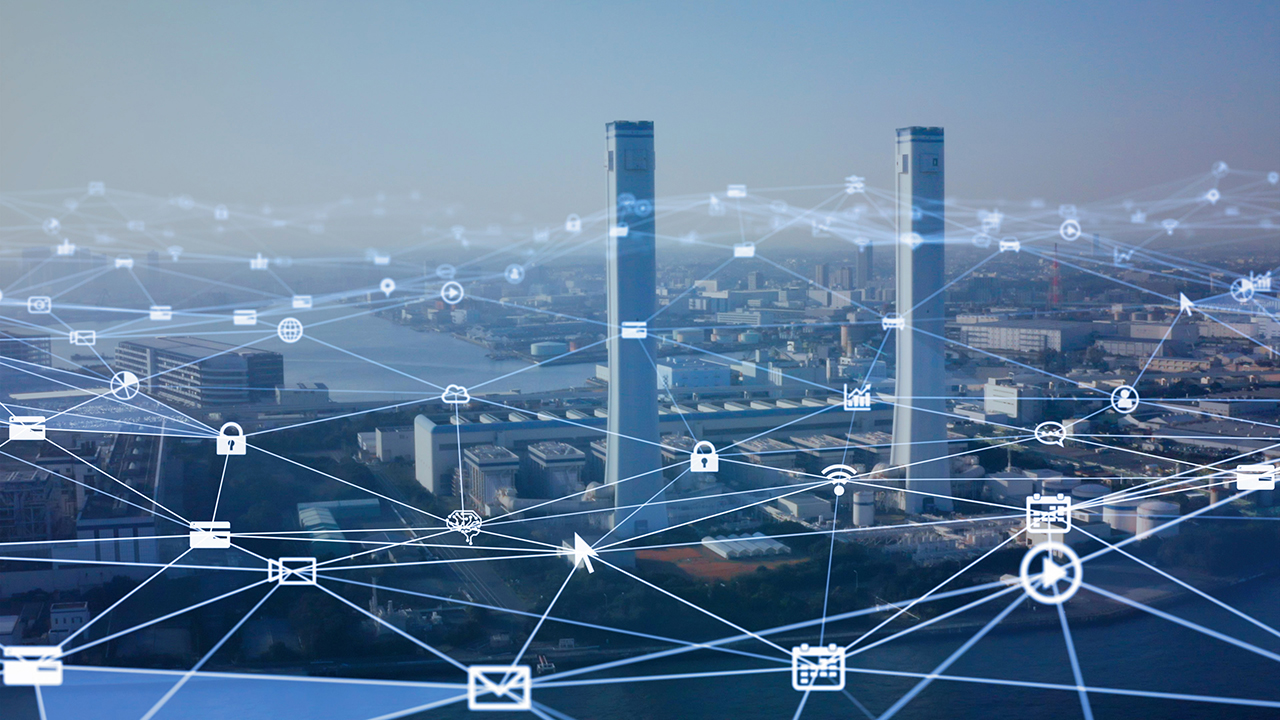
The definition of the
Industrial Internet of Things (IIoT) is broad. It includes emerging Industry 4.0 applications for automation, machine learning and artificial intelligence on the factory floor. It also covers a vast number of applications in oil and gas, mining, water and wastewater management, and environmental remediation projects.
IIoT also includes remote monitoring of wells, communications systems and clean energy installations such as solar panels and windmills. It even includes digital signage on city streets, in subways and on highways, as the devices supporting these deployments must be industrial-grade to handle temperature extremes, moisture and vibration.
In Industrial IoT, therefore, connected devices can be integrated in remote areas, underground systems, construction projects, digital signs in subways, on bridges and overpasses, or deep within a maze of pipes in an oil refinery. All of these devices require monitoring, management and periodic firmware updates. In IIoT deployments, devices may have a service life of a decade or more. So it is inevitable that feature enhancements, security patches and firmware updates will be needed from time to time.
The following diagram shows an IoT device deployment and the role the Digi Remote Manager platform plays in a SCADA system.
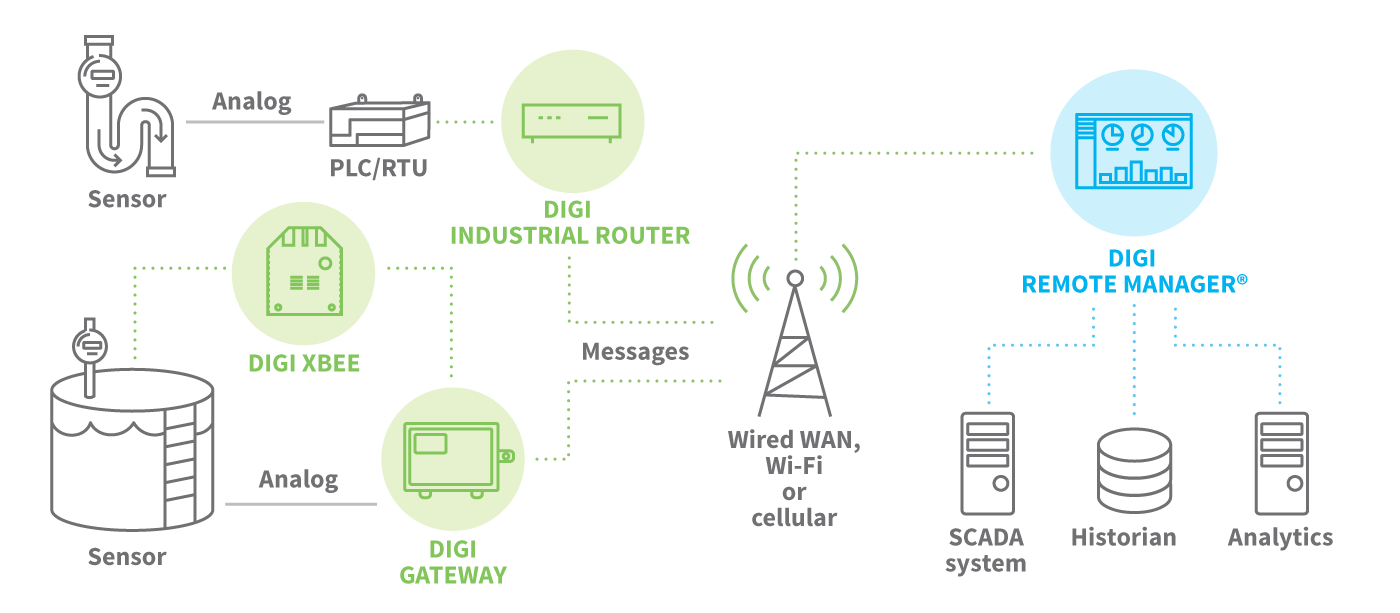
Here are some industrial IoT case study examples:
- See how Wake, Inc. helps construction project managers monitor the concrete curing process with Digi Remote Manager
- Read about AFCEC's efficient, cost-saving wireless communication system and monitoring solution at the Joint Base Cape Cod superfund site
- Learn how cropx built an advanced monitoring and management program for irrigation systems with connectivity to sensors for reduced costs and improved operations
- Read about a major oil and gas operation that improved operations and remote monitoring with Digi solutions
Traffic Management — A Case Study
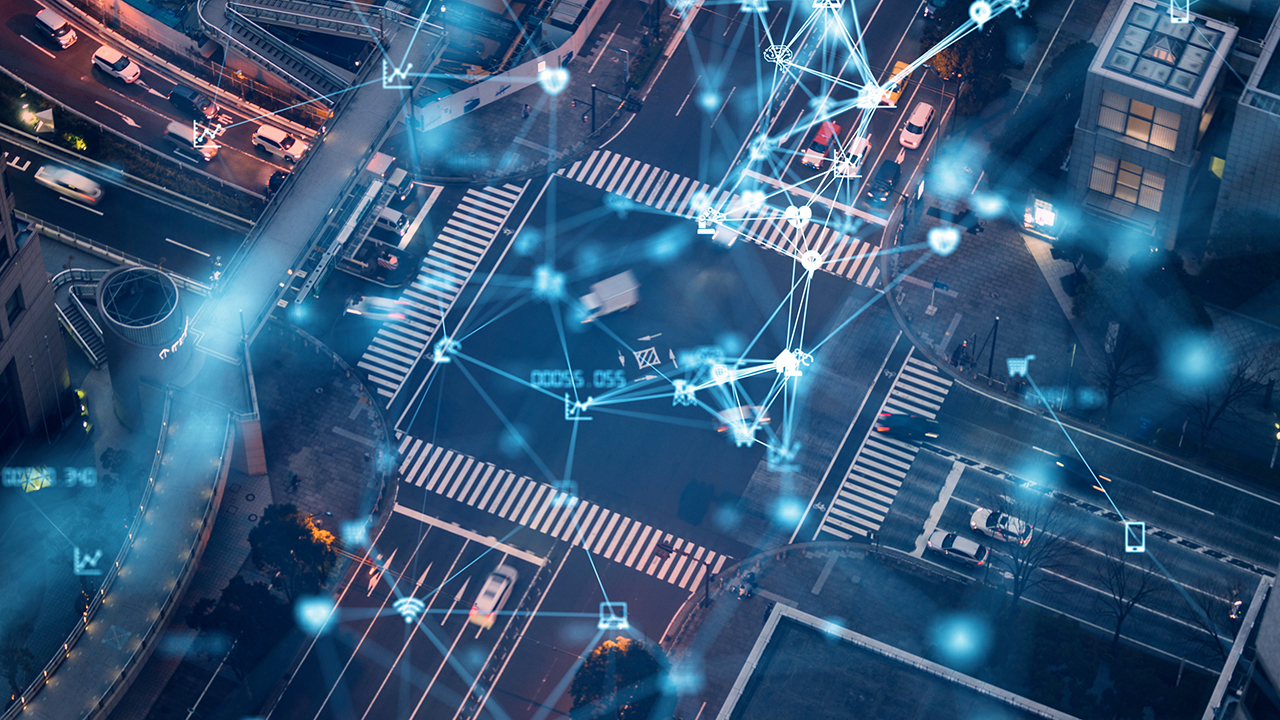
Today, municipalities are upgrading their communications systems citywide to improve the reliability of their infrastructure, as well as the ability to remotely configure, monitor and manage their deployments. Intelligent Transportation Systems (ITS) projects enable sophisticated and future-oriented capabilities, including vehicle detection systems, responsive signal timing for traffic flow and vehicle-to-vehicle communications, all of which will be enhanced by the full rollout of 5G.
In building out improved infrastructure to support these forward-thinking initiatives, departments of transportation like
New York City DOT are taking advantage of the most up-to-date future-proofing technologies on the market today while preparing their municipal traffic monitoring and management for the connected vehicle and autonomous vehicle future. New York City, for example, completed an enormous city-wide upgrade, deploying 14,000 Digi cellular routers at intersections throughout the city's 5 boroughs.
You can read about it in the
case study, and our
blog post on the deployment. For this discussion, the key component was the
Digi Remote Manager® IoT device management platform, which facilitated the massive deployment in record time with zero touch configuration.
This capability, developed and supported by the
Digi Professional Services team, ensured that the installers in the field were able to set up and connect devices without having to perform complex commissioning steps during on-site installation.
These are just a few of the many reasons for the need for device management in the Internet of Things across the commercial, government and industrial landscape. But they all demonstrate one thing: monitoring and managing all of those devices requires centralized management and control.
The Role of IoT Device Management Platforms

To summarize what we have discussed so far, when planning an IoT deployment it is important to keep in mind that an IoT network is not static. It is like a living organism. And it is not possible for humans to keep an eye on dozens, hundreds, thousands — or
millions — of devices to manage their security and uptime effectively. Nor is it possible to manually perform updates to all of those devices.
Therefore, the IoT device management platform has some very important functions:
- Installation/authentication: Installing devices and setting up a network can be labor-intensive and therefore expensive. A full-featured management platform like Digi Remote Manager®, simplifies and expedites this process, facilitating everything from mass configuration to device authentication as devices are added to the network.
- Configuration management: IoT managers must have the ability to reconfigure and manage deployed devices to manage data transfer, device wake-up times and security. A sophisticated IoT device management platform like Digi Remote Manager also performs automated configuration management for security monitoring, and resets the configuration back to its approve state in the event of tampering.
- Security integration: Every aspect of building and deploying connected device networks must be designed to detect, manage and thwart security threats, and the IoT device management platform is a key cog in the IoT ecosystem. See the Digi Remote Manager technical brief on Security, Compliance and Virus Detection for information on the security controls built into Digi RM.
- Monitoring: Monitoring is the key feature of an excellent platform - enabling insights into issues or outages anywhere in the deployment. Network metrics can also reveal patterns and trends that affect performance or indicate security threats. Administrators can set alerts to automatically notify them about certain conditions, and generate status reports at desired intervals.
- Remote access: Every successful IoT deployment includes the capability to perform maintenance and troubleshooting across the entire deployed network. For example, Digi Remote Manager offers these capabilities not only for Digi devices, but also enables out-of-band access to any device with a serial interface. See the following diagram for an illustration of this functionality in an IoT network.
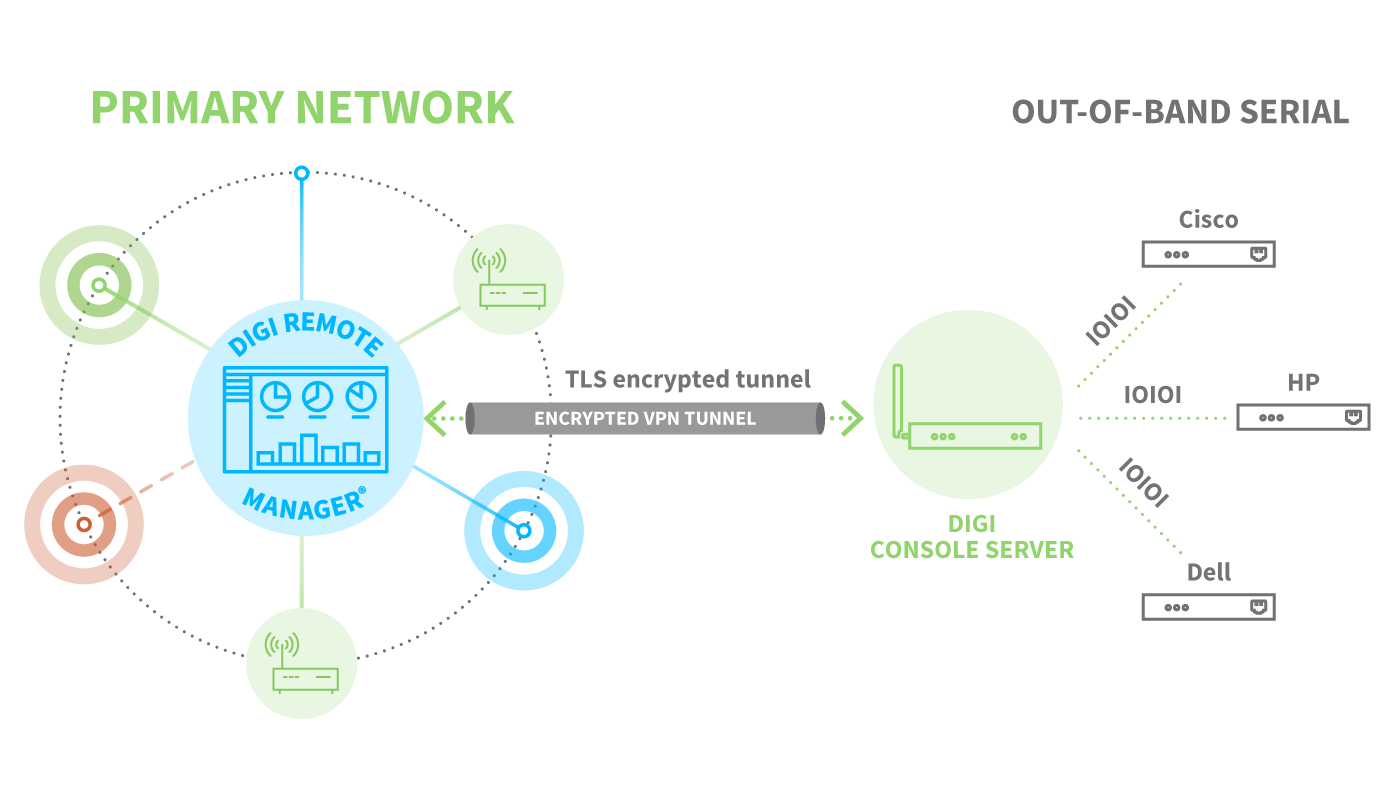
For more details on the functions of the management system, see in the related blog post,
What Is IoT Device Management and Why Do You Need It?
Evaluating IoT Device Management Platforms
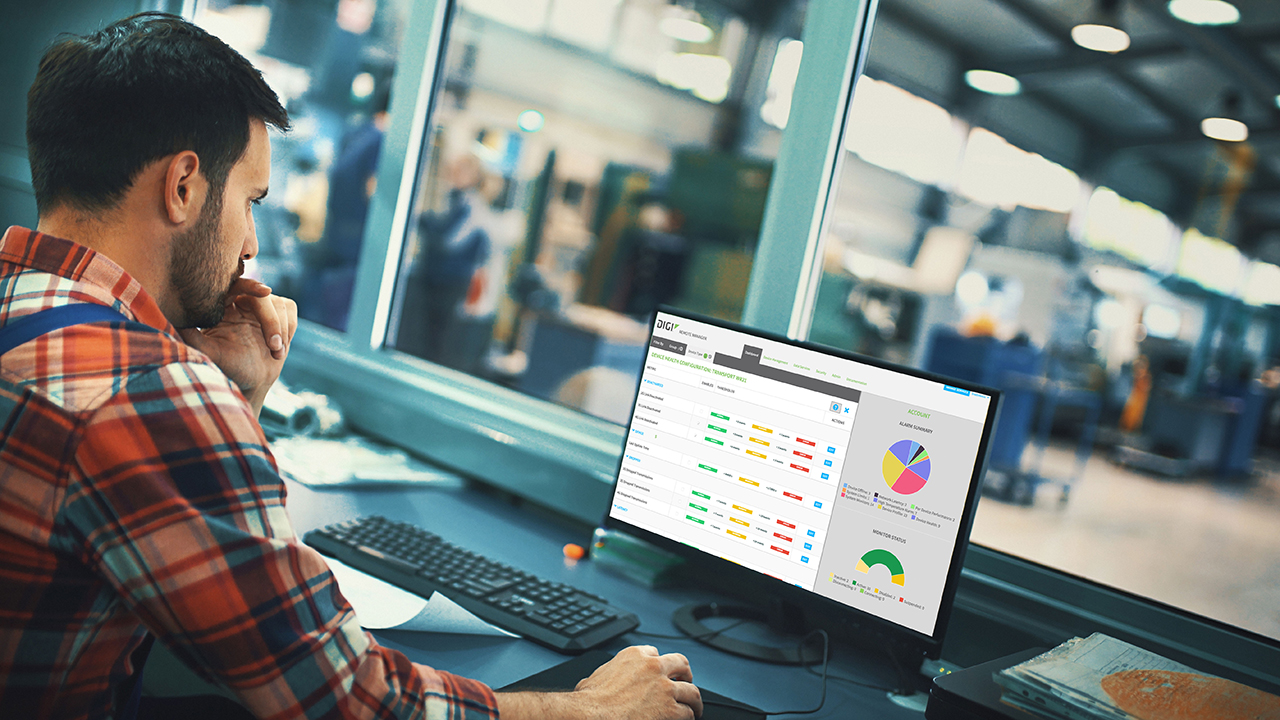
Device management starts with your initial selection of an IoT device. It is critical to work with a device vendor that offers an integrated, sophisticated and secure IoT device management platform that enables you to configure, monitor and manage your device network seamlessly from an application interface.
Include IoT Software in the Device Purchasing Decision
There are some important reasons to evaluate and select a device vendor with the IoT device management platform in mind:
- Configuring and enrolling devices in the network should happen through the software, which will then have a record of every device ID, its device type and configuration, and its location on the network.
- The ability to configure large groups of devices simultaneously and monitor their security effectively ensures scalability. Without these capabilities, enterprises cannot roll out large deployments, keep tabs on them or effectively manage them.
- Not all IoT device management systems are alike. The key features of the program must match your deployment, device configuration, edge computing, remote access, and monitoring requirements. It is also important to evaluate the cost and ROI of the device management platform to ensure it meets your needs.
Note: As a cautionary tale, it is far more challenging to add an IoT device management program to a device network after deployment.
Key Features of an IoT Device Management Platform
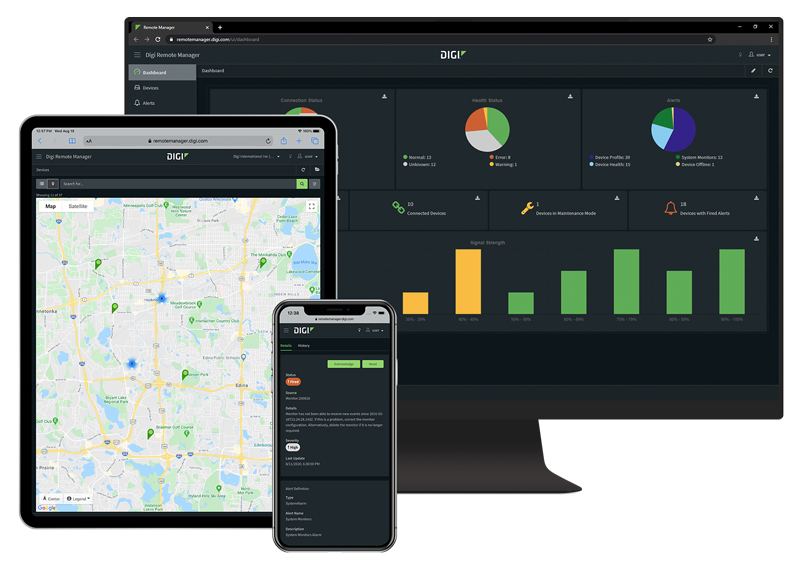
Most platforms for managing your IoT device network include basic capabilities to authenticate and configure devices, deploy new firmware updates to groups of devices in order to update device functionality or security, and remotely troubleshoot issues. But for many applications today, it’s important to have much more comprehensive control (and
contextual IoT device management) via an intelligent network solution.
Here are some additional key features to look for, and the value they provide for intelligent application management:
- Robust, sophisticated APIs:
- Look for an API explorer that offers seamless navigation of the API library and easy testing of the API functionality.
- Look for the ability to connect your own software or database program to the remote management program. This feature enables integration of the remote management program functionality into your own system, as well as the ability to send data to a database in order to create customized reports and analytics from the IoT device management platform data.
- Customizable dashboard:
- It is important to be able to edit your application interface to your needs and specifications. For example, Digi Remote Manager enables you to customize your dashboard widgets, as no two IoT deployments are alike. This functionality enables managers to set up at-a-glance views or charts that provide insights into the most critical conditions of their specific network.
- Sophisticated monitoring and reporting:
- Ensure that the platform offers a comprehensive management dashboard that enables network administrators to monitor the entire deployment and drill down into device groups or individual devices to investigate anomalies. Look for a platform offering cloud-based analytics to provide useful insights into any problems that occur across a fleet of connected devices.
- The system should produce program logs to track performance and help identify and diagnose problems. For example, if a device’s power usage spikes for an unknown reason, program logs should provide administrators with data about the time and circumstances of the usage spike so they can analyze and address the issue.
- Ability to send custom scripts to deployed devices:
- This functionality enables application managers to send files such as Python scripts to the deployed devices. For example, Digi Remote Manager provides authorized file system access to devices for the purpose of downloading scripts and other files. An example of this would be to set up a secure Wi-Fi hotspot login page to enable access to the Wi-Fi on a router.
- Ability to group and control device groups:
- A key ability of a device management platform is control over device configurations, and should be standard with any such platform. A key differentiator to look for is the flexibility to create any device group and apply a specific configuration. For example, if you have one device type that you deploy to three different applications, you must be able to set the configuration separately for each application. Digi Remote Manager offers this flexibility, but not all IoT management programs do.
- Access to edge devices:
- Enabling edge computing is a critical feature of an increasing number of IoT deployments today, to reduce latency in the transfer of data, and to improve the efficiency of the network. Your IoT device management platform should enable this access to ensure you can manage the flow of data from the edge.
- Out-of-band management:
- The ability to reach and troubleshoot offline IoT devices can be crucial for many applications. While some remote management tools require upgrades to access this important functionality, Digi Remote Manager enables out-of-band access through its basic-level service. This is done via serial connection through a combination of Digi Remote Manager and cellular products running the Digi Accelerated Linux (DAL) operating system.
- White labeling:
- For those who want to develop solutions that incorporate their own branding, this is an important capability. For example, Digi Remote Manager offers white labeling options to enable value added resellers to incorporate the functionality into their solutions. As an example, some customers use Digi Remote Manager APIs to customize the software for specific use cases or language localization. See the Enlazza customer story for an example.
To learn more about how to securely manage your IoT device deployment with sophisticated IoT device management software, contact Digi today at
www.digi.com/contactus. Or visit
shop.digi.com to start a free trial of Digi Remote Manager.